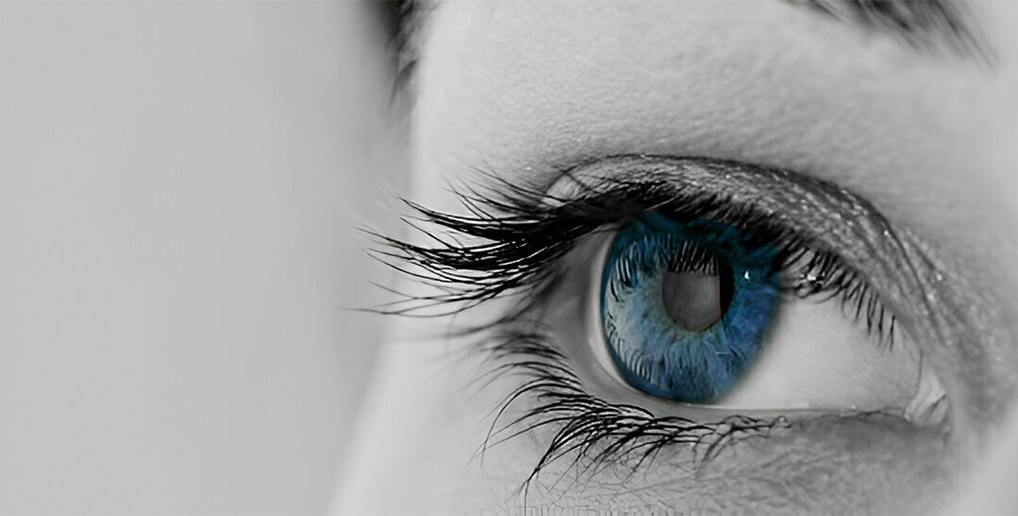
Get Optic Nerve Hypoplasia Stem Cell Treatment in Delhi, India
Optic nerve hypoplasia (ONH) is a congenital condition, under this condition the optic nerve suffers underdevelopment. ONH vision deficiency varies from moderate to extreme, and one or both eyes may be impaired. In both unilateral and bilateral cases, nystagmus (shaking of the eyes) can be observed. With ONH, the frequency of strabismus is greater. Central nervous system (CNS) malformations that place the patient at risk for other issues, including seizure disease and developmental delay, may be associated with optic nerve hypoplasia. In most infants, hormone deficiencies emerge, regardless of related midline brain abnormalities or MRI pituitary gland abnormalities. Actually, the majority of kids with growth hormone deficiency have a regular MRI.
Optic Nerve Hypoplasia Stem Cell Treatment In Delhi
Optic nerve hypoplasia refers to that condition in which the number of optic nerve axons start decreasing in your child’s eye. It can be caused due to first trimester bleeding, maternal smoking, young maternal age, first pregnancy, etc. You can also experience some symptoms including visual impairment, rapid eye movement, difficult focuses on objects, etc. Stem cell therapy has emerged as the best treatment option to treat this eye disorder. This therapy offers hope to many individuals who are suffering from ONH. By harnessing the regenerative potential of stem cells, this innovative approach targets the root cause of ONH, potentially restoring vision and improving quality of life for affected individuals.
Do you Know about Optic Nerve Hypoplasia?
In 70 percent -80 percent of the cases, optic nerve hypoplasia (ONH) occurs and is typically the first presenting characteristic accompanied by hormonal abnormalities. There may also be other eye abnormalities, such as nystagmus and microphthalmia.
Optic nerve hypoplasia (ONH), pituitary hypoplasia and midbrain anomalies such as
absence of septum pellucidum and corpus collasum agenesis are characterized by septo-optic dysplasia (SOD), also known as de Morsier Syndrome
Global Stem Cell Care has been providing the best of treatment to the patients who are suffering from this condition, and through the stem cell treatment, their symptoms have also improved.
Only stem cell treatment is the cure for this condition as it helps to replace the damaged cells. Global Stem Cell Care
has the best team that works for the effective treatment of this medical condition.
From global retardation through focal deficits such as epilepsy or hemiparesis, neurological dysfunction is prevalent. Vision loss is often induced by traumatic optic neuropathy, optic neuritis and ischemic optic neuropathy, but is typically not associated with other disorders.
In 70 percent -80 percent of the cases, optic nerve hypoplasia (ONH) occurs and is typically the first presenting characteristic accompanied by hormonal abnormalities. There may also be other eye abnormalities, such as nystagmus and microphthalmia.
Optic nerve hypoplasia (ONH), pituitary hypoplasia and midbrain anomalies such as absence of septum pellucidum and corpus collasum agenesis are characterized by septo-optic dysplasia (SOD), also known as de Morsier Syndrome
Global Stem Cell Care has been providing the best of treatment to the patients who are suffering from this condition, and through the stem cell treatment, their symptoms have also improved.
Only stem cell treatment is the cure for this condition as it helps to replace the damaged cells. Global Stem Cell Care has the best team that works for the effective treatment of this medical condition.
From global retardation through focal deficits such as epilepsy or hemiparesis, neurological dysfunction is prevalent. Vision loss is often induced by traumatic optic neuropathy, optic neuritis and ischemic optic neuropathy, but is typically not associated with other disorders.
Diagnosis of Optic Nerve Hypoplasia
The symptoms of Autism tend to be different in patients who are suffering from this condition. There are some general symptoms of this condition that is given as follows:
Cerebral palsy symptoms can be seen at the age of 3, and these symptoms can vary due to the different contraction of muscles. Symptoms tend to be very different in every child.
Through a proper examination of the child’s condition and the symptoms, the proper diagnosis can be done by the doctor. The more injury has been done to the brain; the more severity would be of the case.
The effects of this condition can be seen mainly on motor functions, control, coordination, and reflexes. In some children swallowing and feeding difficulties can also be seen. The other symptoms that can be seen as a result of this condition are sensory impairment, seizures, and learning disabilities.
Common symptoms of Cerebral Palsy is given as follows:
- Baby is not feeding properly or is sucking very floppily
- Child’s muscles get very stiff
- Child has an unusual posture that is more drooping to one side
- Child faces a problem for developing the motor skills, which includes rolling over, sitting up, or crawling — at a normal pace
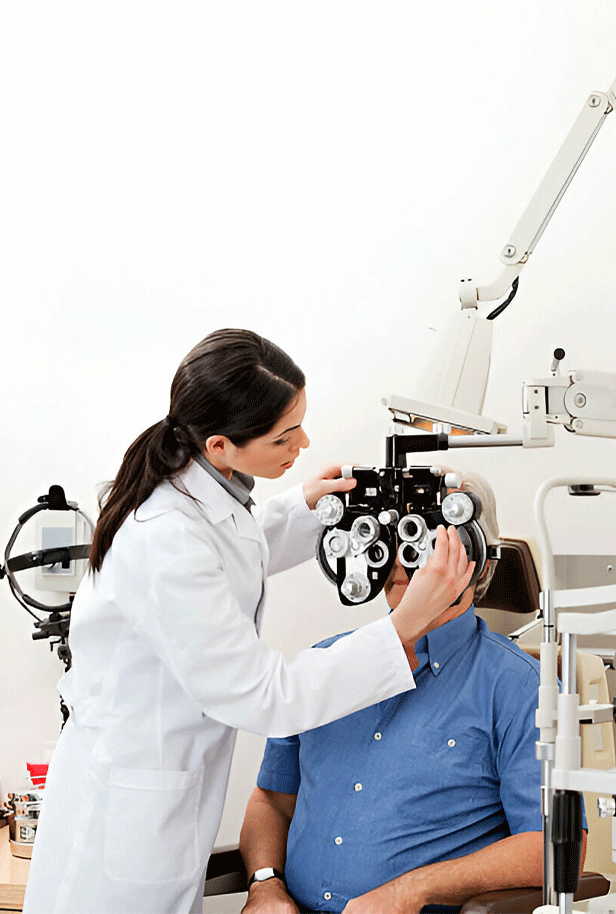
DIAGNOSIS
During a dilated eye exam, the diagnosis of ONH is normally made by the presence of the small/pale optic nerve. Visual acuity potential based on the appearance of the optic nerve is hard to predict. The majority of ONH cases have no clearly defined cause. When developing ONH, there are no known ethnic or socioeconomic causes, nor is there a known correlation with pesticide exposure. Maternal ingestion of phenytoin, quinine, and LSD, as well as fetal alcohol syndrome, have been associated with ONH. The best hospitals for stem cell treatment are present in Delhi. Global Stem Cell Care is the best stem cell treatment provider in India.
Types
Optic Nerve Hypoplasia
- Currently, no one knows the exact causes of optic nerve hypoplasia. In most cases, it appears at random.
- There is evidence, though, that a specific gene mutation may be associated with optic nerve hypoplasia.
- However, the correlation seems to be minor, as the majority of those with optic nerve hypoplasia do not have these gene mutations.
- Some researchers hypothesize that optic nerve hypoplasia could result from vascular disruption. Vascular disruption refers to temporarily disrupting an unborn baby’s blood flow, which can cause developmental delays and congenital disabilities.
Risk factors that have been associated with optic nerve hypoplasia include:
- First trimester bleeding
- Maternal smoking
- Young maternal age
- Maternal diabetes
- Preterm labor
- First pregnancy
- Low maternal weight gain or maternal weight loss
- Use of recreational drugs during pregnancy
- Use of some medications during pregnancy
Gene Therapy
Researchers used gene therapy to regenerate damaged axons in the eye, in a discovery that could aid the development of new treatments for optic nerve hypoplasia. One of the major benefits of gene therapy is also that the removal of problematic genes from the body of future parents also removes any chances of their future baby being afflicted by the same condition. Moreover, as time progresses and technology gets advanced, gene therapy is becoming more effective and safer.
Nutrition Therapy
Medical Nutrition treatment (MNT) is a helpful approach to treat ailments and their related side effects by the utilization of an explicitly customized diet defined and observed by a master. The treatment focuses on fixing dietary wasteful aspects and physiological awkward nature in order to give the most ideal condition to the immature microorganisms to grow suitably, just as improving the patient’s general well-being.
Diksha Jadhav From Ranchi Came To Us For The Treatment Of Optic Nerve Hypoplasia
Hi, I am Ratan Jadhav, father of Diksha. We visited Global Stem Cell Care for stem cell therapy. My daughter was detected with optic nerve hypoplasia. My cousin told me about this therapy. And after that, we contacted them and discussed all the essential things needed in the further treatment procedure. She’s been getting treatment for her optic nerve hypoplasia through stem cells. The treatment has been working well. Her vision is improving. We’re very happy with the results. Thanks to the whole team of Global Stem Cell Care.
James Harrison From Italy Visited India For Stem Cell Therapy
Hi, I am Mary, the mother of James. My child was detected with optic nerve hypoplasia. And I was searching for a treatment to cure my child’s condition. Then I learned about stem cell treatment which is proven to be an effective, safe and affordable process, and to be honest; the results are outstanding. This is one of the best treatments for optic nerve hypoplasia that I’ve encountered. I highly recommend it to other parents who may be looking for a treatment option for their child.
Kylie Thomson Came To India With Her Parents For The Treatment Of Optic Nerve Hypoplasia
I am Oliver. I visited India with my 4-year-old kid Kylie to get stem cell treatment for optic nerve hypoplasia. In May, Katie was first treated with stem cells via Global Stem Cell Care. After her first treatment, she started to see the light and distinguish colors. With both eyes, she could also read and identify the colors of a green sign some 30 feet away. We are very happy with the improvements. I want to thank all the staff of Global Stem Cell Care.
Otis Ralph Came To India For The Treatment Of Optic Nerve Hypoplasia Via Global Stem Cell Care
My son had Optic nerve hypoplasia, and my cousin suggested this stem cell treatment, and to be honest, it helped him a lot. So, if you are looking for something affordable and effective, I highly recommend this treatment, and the best part is that it has no side effects to worry about. We reached the hospital in a few days because of the support they are offering. Their staff picked me up from the airport, and the doctors were well educated.
Related Disorders for Stem Cell Treatment
optic nerve damage stem cell treatment
stem cell therapy age related macular degeneration
stem cells cure retinitis pigmentosa
optic neuropathy stem cell treatment
eye best’s disease treatment with stem cells
stem cell therapy for retinopathy
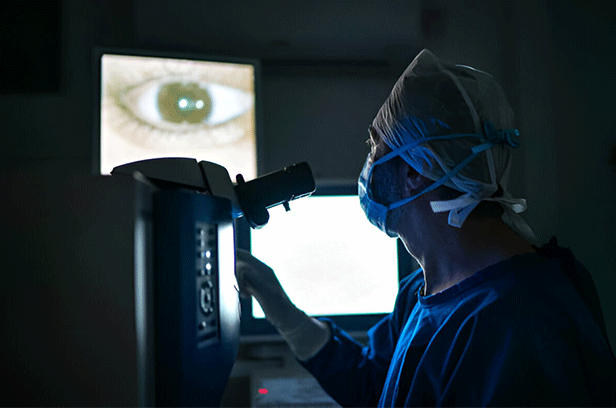
Implantation
1. Global Stem Cell Care has the best stem cell therapy for Optic Nerve Hypoplasia. The implantation stage is of utmost importance during the stem cell treatment.
2. Hypoplasia of the optic nerve (ONH) arises due to the underdevelopment of the optic nerve that carries synaptic signaling to the brain from the retina throughout the eye. Septo-optic dysplasia (SOD), also known as de Morsier syndrome, is a subtype of ONH which results from optic nerve underdevelopment, pituitary gland dysfunction, and the lack of a midline region of the brain, septum pellucidum.
3. SOD results from abnormalities during fetal embryological development and studies indicate that gene defects as well as embryo susceptibility to infections can be linked with ONH. Global Stem Cell Care ensures you get the best stem cell therapy in Delhi, India.
4. SOD also causes other signs such as pituitary deficiency, autistic tendencies, epileptic seizures and more in addition to the loss of vision that is a hallmark symptom of ONH.
For the patients living with ONH-SOD, there are few traditional treatment options available, which primarily concentrate on helping patients deal with their impairment. None of them, though, are currently treating optic nerve function loss. In the optic nerve hypoplasia stem cell, these cells will help you to recover from the condition you are suffering from and have the ability to replace nerve cells, enabling people with ONH-SOD to gain more vision.
The following is the structure that is followed during the implantation stage:
- Intravenous administration
- Liberation angioplasty
- Intrathecal (lumber puncture)
- Intraarterial
- Subcutaneous
- Surgical administration for stroke
- Intramuscular
MECHANISM
For the treatment of Optic Nerve Hypoplasia , the stem cells that are used are the Mesenchymal Stem Cells (MSCs). Global Stem Cell Care has been successfully executing optic nerve hypoplasia stem cell treatment on patients with expert care and precautions. Following is the mechanisms of stem cell transplantation for Optic Nerve Hypoplasia in Delhi, India.
For around 10 years, Mesenchymal Stem Cells have been used to treat ONH and SOD (de Morsier Syndrome).These stem cells, depending on their various special characteristics, can enhance vision through the following mechanisms:
The capacity of mesenchymal stem cells (MSCs) to differentiate into neural cells and to secrete neurotrophic factors, such as brain-derived neurotrophic factor (BDNF), glial cell line-derived neurotrophic factors (GDNF), which may promote the differentiation of grafted cells into neural cells, prevent apoptosis, enhance angiogenesis, suppress inflammatory infiltrates and sustain grafted cells.
These pathways not only help to maintain vision, they also help to greatly enhance vision loss by optic nerve and retinal ganglion cell regeneration.
The stem cells are inserted into the retrobulbar space by IV, lumbar puncture and/or injection to do so. The aim of this mix is to more accurately reach the infected regions.
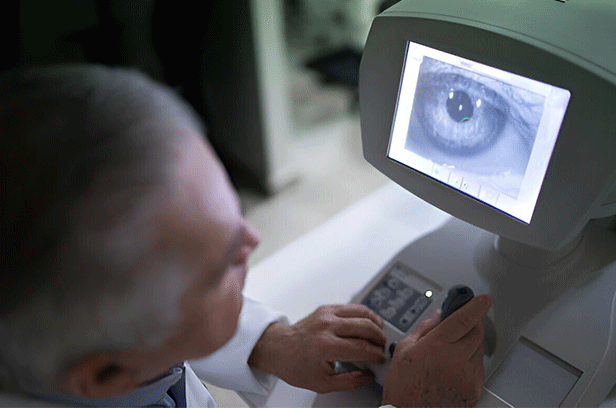

MECHANISM
For the treatment of Optic Nerve Hypoplasia , the stem cells that are used are the Mesenchymal Stem Cells (MSCs). Global Stem Cell Care has been successfully executing optic nerve hypoplasia stem cell treatment on patients with expert care and precautions. Following is the mechanisms of stem cell transplantation for Optic Nerve Hypoplasia in Delhi, India.
For around 10 years, Mesenchymal Stem Cells have been used to treat ONH and SOD (de Morsier Syndrome).These stem cells, depending on their various special characteristics, can enhance vision through the following mechanisms:
The capacity of mesenchymal stem cells (MSCs) to differentiate into neural cells and to secrete neurotrophic factors, such as brain-derived neurotrophic factor (BDNF), glial cell line-derived neurotrophic factors (GDNF), which may promote the differentiation of grafted cells into neural cells, prevent apoptosis, enhance angiogenesis, suppress inflammatory infiltrates and sustain grafted cells.
These pathways not only help to maintain vision, they also help to greatly enhance vision loss by optic nerve and retinal ganglion cell regeneration.
The stem cells are inserted into the retrobulbar space by IV, lumbar puncture and/or injection to do so. The aim of this mix is to more accurately reach the infected regions.
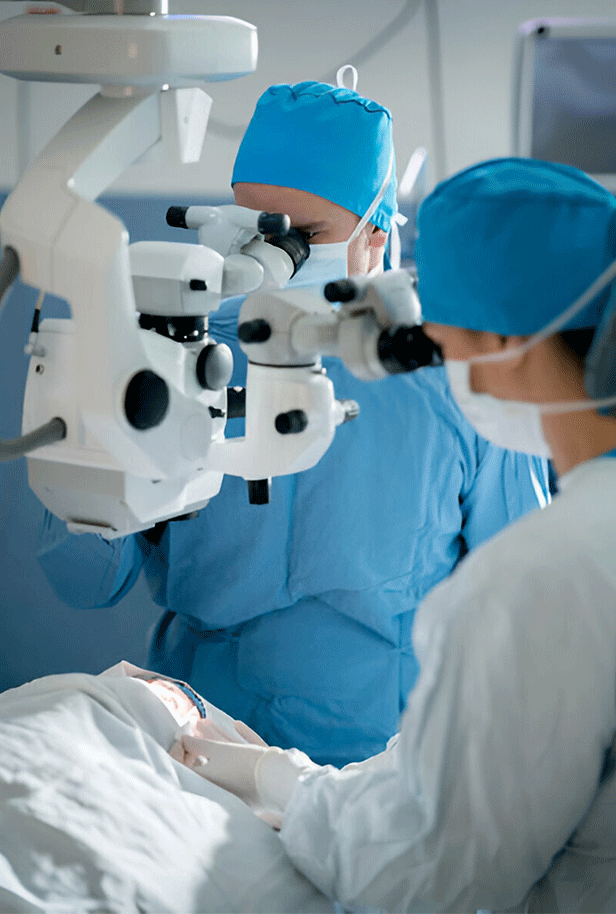
Get Stem Cell Therapy for Optic Nerve Hypoplasia
Using a number of cell sources, such as Umbilical Cord Blood Stem Cell (UC-BSC), Umbilical Cord Blood-Derived Mesenchymal Stem Cell (UCB-MSC) and Bone Marrow-Derived Mesenchymal Stem Cell, detailed research on the efficacy of stem cell transplantation have been carried out (BM-MSC).Through stem cell treatment by Global Stem Cell Care, there is the regeneration of nerve tissues along with blood supply improvements, and some major reduction in inflammation. The best stem cell therapy in India is offered by a renowned treatment expert like Global Stem Cell Care. It provides the best treatment for Optic Nerve Hypoplasia that shows improvement in the child.
How Global Stem Cell Care Therapy Works ?
To address the restrictions of traditional therapies,
Stem cells are mixed in our protocols with advanced ONH-SOD therapies that not only concentrate on helping the patient deal with their symptoms.
the extensive stem cell treatment protocols for Optic Nerve Hypoplasia (ONH) and Septo-Optic Dysplasia (SOD)
But by encouraging the regeneration of the optic nerve and other damaged brain systems, they also treat the root cause of the disease.
We agree that our extensive ONH-SOD care approach gives our patients the best opportunity to enhance their vision, creating a better quality of life.
To address the restrictions of traditional therapies,
Stem cells are mixed in our protocols with advanced ONH-SOD therapies that not only concentrate on helping the patient deal with their symptoms.
the extensive stem cell treatment protocols for Optic Nerve Hypoplasia (ONH) and Septo-Optic Dysplasia (SOD)
But by encouraging the regeneration of the optic nerve and other damaged brain systems, they also treat the root cause of the disease.
We agree that our extensive ONH-SOD care approach gives our patients the best opportunity to enhance their vision, creating a better quality of life.
VIP TREATMENT TO PATIENTS AT GLOBAL STEM CELL CARE
The therapy sessions given to the patients at Global Stem Cell Care occur in the VIP treatment room in the advanced clinic.
24*7 supervision is maintained on the patients by the efficient medical team.
Global Stem Cell Care highly recommends the patients stay for a minimum of 3 days in Hospital.

GLOBAL STEM CELL CARE TREATMENT PROCEDURE
The treatments that take place in Global Stem Cell Care are of 3 days. The treatment protocol is safe and non-invasive. The patients can travel the next day. The following is the day-wise schedule for the patients.
- Pick up from the Airport to the Hospital
- Interaction between Dr and Patient, to clear all their doubts at that time
- Admission procedure
- Clinical examination & Lab test will be done prescribed by the doctor
- Supportive Therapy
- Stem cell Procedure
- Supportive therapies
- Physiotherapy
- Supportive Therapy
- Physiotherapy
- Discharging formalities
- Drop back to the Airport
- For Admission, carry the identity card (Passport/ Pan Card / Driving License)
- Carry the hard copy of Patient reports
Our Promise
Optic nerve hypoplasia is an eye disorder which may occur during birth. It can affect your vision and quality of your life. That’s why we will provide you with the best treatment option which is known as stem cell therapy. We use the regenerative potential of stem cells to restore the damaged tissue in your eye, so you can see this wonderful world. We committed to utilise the latest technologies and techniques to harvest the stem cells. Our doctors provide personalised treatment to individuals according to their specific needs. Through rigorous research and compassionate care, we strive to offer hope where there was once only uncertainty, guiding individuals towards a brighter future with improved vision and newfound possibilities.


Cost
Treatment of optic nerve hypoplasia through stem cell treatment is expensive for several individuals. And the factors which make it this costly are severity of patients condition, diagnosis fees, number of stem cells required for treatment, and many other factors. Stem cell therapy is a promising approach that treats many individuals. There are additional factors which may fluctuate the cost which includes medical expenses, transportation, consultation fees, etc. Our researchers are doing various clinical trials to make this treatment affordable for everyone. Patients should also consider potential ancillary expenses such as travel and accommodations.
Success Rate
Stem cell therapy provides you the best way to treat optic nerve hypoplasia with its regenerative potential to restore damaged tissue. Many patients get remarkable results after taking the treatment from Global Stem Cell care. Success rate is not the same for all, some people experience long-term benefits while others get temporary stoppage on the symptoms. There are major factors in which success rate depends on such as age of the patient, severity of condition, overall health, and other factors. Although, clinical trials and research are still going to make it equally effective for all.


Advantages
Optic nerve hypoplasia poses significant challenges in vision impairment, but at Global Stem Cell Care we offer stem cell treatment to treat your condition and reduce the symptoms. Here are some advantages you can get through stem cell treatment:
- Regeneration of Optic Nerve Tissue: You can take leverage of its regenerative potential which helps to restore the damaged eye tissues by differentiating itself into specialised cell types including retinal ganglion cells. Ganglion cells are an important cell for optic nerve function.
- Improved Visual Function: Stem cell therapy is an innovative medical approach that enhances visual function to improve sight in patients who are suffering from ONH by replacing damaged or underdeveloped optic nerve cells.
- Long-term Sustainability: Stem cell treatments aim to provide a lasting solution by promoting the growth of healthy optic nerve tissue, offering long-term benefits compared to temporary interventions.
- Reduced Risk of Rejection: Utilising a patient’s own stem cells for treatment reduces the risk of rejection or adverse reactions, enhancing safety and compatibility.
- Potential for Early Intervention: Early administration of stem cell therapy may halt or mitigate the progression of ONH, offering hope for better outcomes, especially when initiated during critical developmental stages.
- Customised Treatment Approach: Stem cell therapy allows for personalised treatment strategies tailored to individual patient needs, optimising efficacy and minimising side effects.
Quality Control
At Global Stem Cell Care, we are embedding quality control measures to make sure that you get the high-quality stem cell treatment to treat your ONH and stop the progression. Here what we do for quality control:
- Patient screening: We do detailed checking of patients to provide them the suitable treatment.
- Stem Cell Sourcing: Strict protocols for sourcing the highest quality stem cells for therapy.
- Laboratory Standards: Adherence to international laboratory standards to maintain cell viability and purity.
- Treatment Protocols: Implementation of standardised treatment protocols tailored to individual patient needs.
- Monitoring and Follow-up: Regular monitoring of patient progress post-treatment with comprehensive follow-up care.
- Continuous Improvement: Commitment to ongoing research and development for enhancing treatment efficacy and safety.
Quality Certificate
Global Stem Cell Care offers a quality certificate for treating optic nerve hypoplasia with stem cell therapy. This certification ensures adherence to stringent standards in treatment protocols, patient care, and safety measures. Stem cell therapy holds promise in restoring optic nerve function and improving vision in individuals with optic nerve hypoplasia. Under the guidance of experienced specialists, the procedure at Global Stem Cell Care follows rigorous quality control measures to ensure efficacy and safety. Patients can trust in the credibility of the certificate, reflecting the commitment to excellence in providing cutting-edge stem cell treatments for optic nerve hypoplasia, ultimately enhancing patients’ quality of life.

What to Expect from Stem Cell Treatment for Optic Nerve Hypoplasia?
The goal of stem cell therapy by Global Stem Cell Care, is done to regain neurological activity in the field of brain/spinal cord lesion, so after our treatment, different forms of recovery are possible and our past patients have encountered the following:
- Visual acuity Sharpened
- Enhanced understanding of light
- Visual field expanded
- Brighter night vision
- Nystagmus diminished
- Enhanced strabismus
- Enhanced hormonal disorders
- Diminished autism signs
![]() Visual acuity
Visual acuity
![]() Light perception
Light perception
![]() Field of vision
Field of vision
![]() Night vision
Night vision
![]() Colour vision
Colour vision
![]() Nystagmus
Nystagmus
Possible Improvement
Through stem cell therapy by Global Stem Cell Care, improvements can be seen in the symptoms of the patients. The main motto of stem cell therapy for Optic Nerve Hypoplasia is to renew the neurological function in the brain/spinal cord, which was earlier disrupted. After the stem cell treatment, major improvements can be seen in the patients. Most patients with Optic nerve disorders suffer from, optical acuity, visual field, light sensitivity, night vision, strabismus, and nystagmus, therapies using MSCs demonstrated good progress. In comparison, therapy with stem cells has led to a substantial slowdown in vision deterioration in patients with advanced conditions.
Stem cell-treated patients with optic nerve hypoplasia (ONH) and septo-optic dysplasia (de Morsier Syndrome) typically observe changes in the following areas:
FOLLOW UP
The follow up is the most important stage through which the doctors make the assessment of the condition of the patient. Without the follow-up, the treatment of Cerebral Palsy cannot be completed. According to the doctor’s recommendation, the patient has to come to visit.
FREQUENTLY ASKED QUESTIONS
Q. WHAT TESTS SHOULD BE DONE FOR CHILDREN WITH OPTIC NERVE HYPOPLASIA?
Q. DOES OPTIC NERVE HYPOPLASIA GET WORSE OVER TIME?
Q. IS THERE ANY TREATMENT FOR OPTIC NERVE HYPOPLASIA?
A.There is no cure for ONH by medicinal or surgical means. Occlusion of the better-seeing eye, however can enhance vision in the other eye. Children with severe loss of vision in both eyes can benefit from low vision specialists’ early supportive attention. Treatment with stem cells has not been proven to be successful for ONH.
Q. Can optic nerve hypoplasia be cured?
A.Treatment also includes a team of practitioners, including pediatricians, ophthalmologists, neurologists, endocrinologists and other health care providers, to organize their activities. Hormone abnormalities, often driven by endocrinologists, are treated with hormone replacement therapy. Vision defects, however are typically not treatable in both ONH and SOD patients, while low vision patients may seek support.
Useful Tags
Stem Cell Treatment for Optic Nerve Hypoplasia, Stem Cell Therapy for Optic Nerve Hypoplasiain India, Stem Cell Therapy for Optic Nerve Hypoplasia Cost in India, Affordable Stem Cell Therapy for Optic Nerve Hypoplasia in India, Low Cost Stem Cell Therapy for Optic Nerve Hypoplasia in India, Price of Stem Cell Therapy for Optic Nerve Hypoplasia in India, stem cell treatment for Optic Nerve Hypoplasia in Delhi, stem cell treatment for Optic Nerve Hypoplasia in India, stem cell Hospital for Optic Nerve Hypoplasia in Delhi, stem cell Hospital for Optic Nerve Hypoplasia in India
